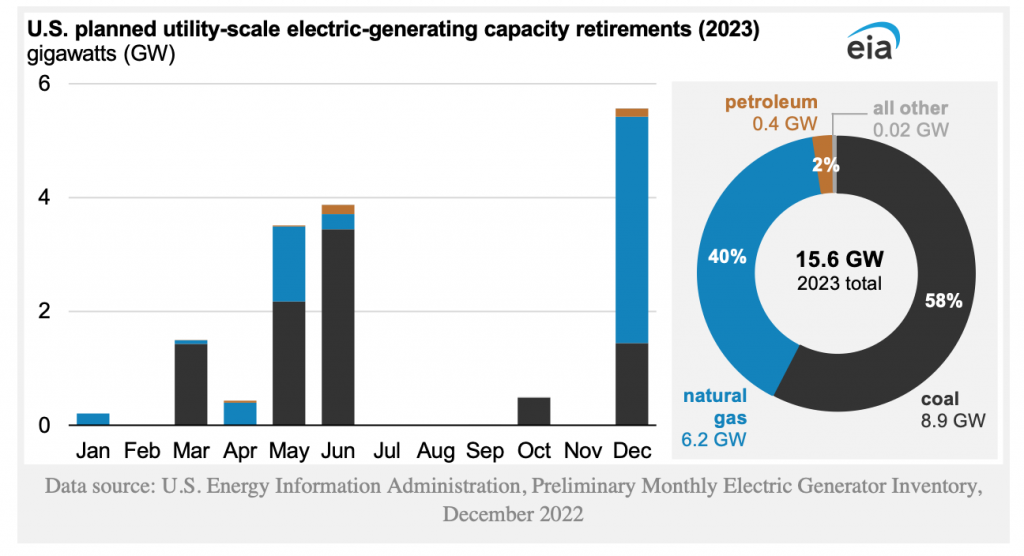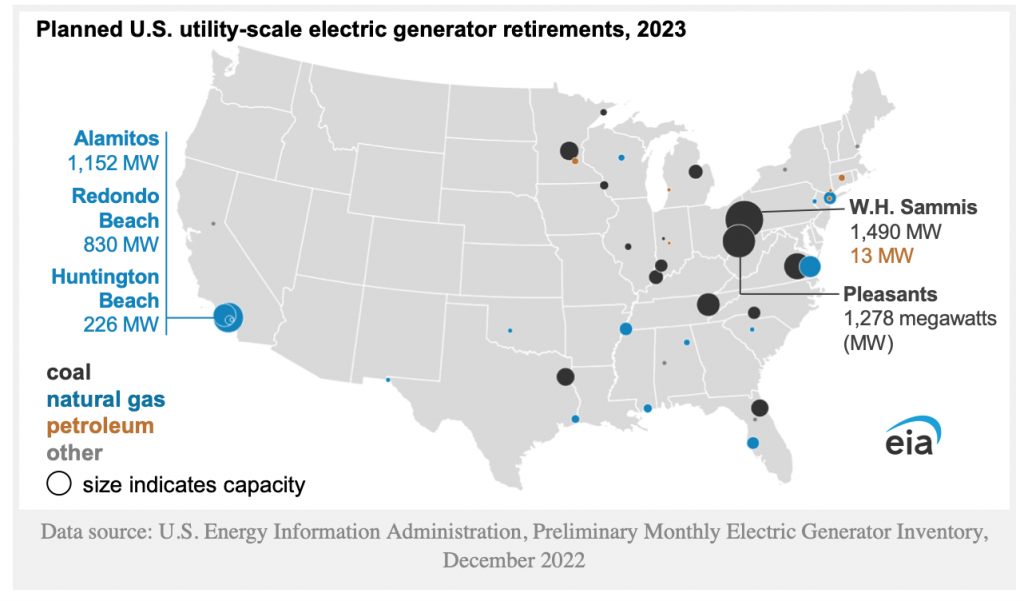In 2023, grid operators across the United States plan to retire 15.6 gigawatts (GW) of electric-generating capacity, mostly natural gas-fired (6.2 GW) and coal-fired (8.9 GW) power plants.
Most of this retired generation capacity (21.8 GW) will be re-allocated to lower cost renewable power generator plants, namely large wind and solar – contributing to the 50 GW of new renewable power generation expected to come online by year end.
Natural Gas: This year, 6.2 GW of U.S. natural gas-fired capacity is scheduled to retire, representing 1.3% of the operating natural gas fleet as of January. Most of the retiring natural gas capacity is made up of older steam and combustion turbine units, which produce electricity less efficiently than many of the newer combined-cycle natural gas units.
Three aging natural gas-fired plants in California (Alamitos, Huntington Beach, and Redondo Beach), with a combined 2.2 GW of capacity, are scheduled to retire by the end of this year. These plants were originally slated to retire in 2020; they were granted a three-year extension to maintain grid reliability.
Coal: Substantial U.S. coal-fired capacity has retired over the past decade, and a record 14.9 GW was retired in 2015. Annual coal retirements averaged 11.0 GW a year from 2015 to 2020, decreased to 5.6 GW in 2021, and then increased to 11.5 GW in 2022. This year, power plant owners and operators plan to retire 8.9 GW of coal-fired capacity, which is 4.5% of the total coal-fired capacity at the start of the year.
Most coal-fired power plants operating in the United States were built in the 1970s and 1980s. As these aging coal-fired power plants compete with a growing number of highly efficient, modern natural gas-fired power plants and low-cost renewables, such as wind and solar, more of these coal-fired power plants are being retired.
The largest coal-fired power plant expected to retire this year is the 1,490 MW W.H. Sammis Power Plant in Ohio. The oldest four of the plant’s seven coal-fired units were retired in 2020; the last three units will be shut down this year, along with the plant’s five petroleum-fired units (13 MW of combined capacity).

Pleasants Power Station (1,278 MW) is the second-largest coal-fired power plant retirement expected this year. Energy Harbor, which plans to become a 100% carbon-free electricity supplier by the end of this year, owns both W.H. Sammis and Pleasants.

Petroleum. Petroleum-fired power plants make up a small portion of generating capacity in the United States at around 2.2%. Most of these plants are seldom run and serve as peaker plants—plants that only supply electricity during higher-than-normal electricity demand, such as during snowstorms and extreme heatwaves. This year, 0.4 GW of U.S. petroleum-fired capacity is scheduled to retire.
Source: EIA
